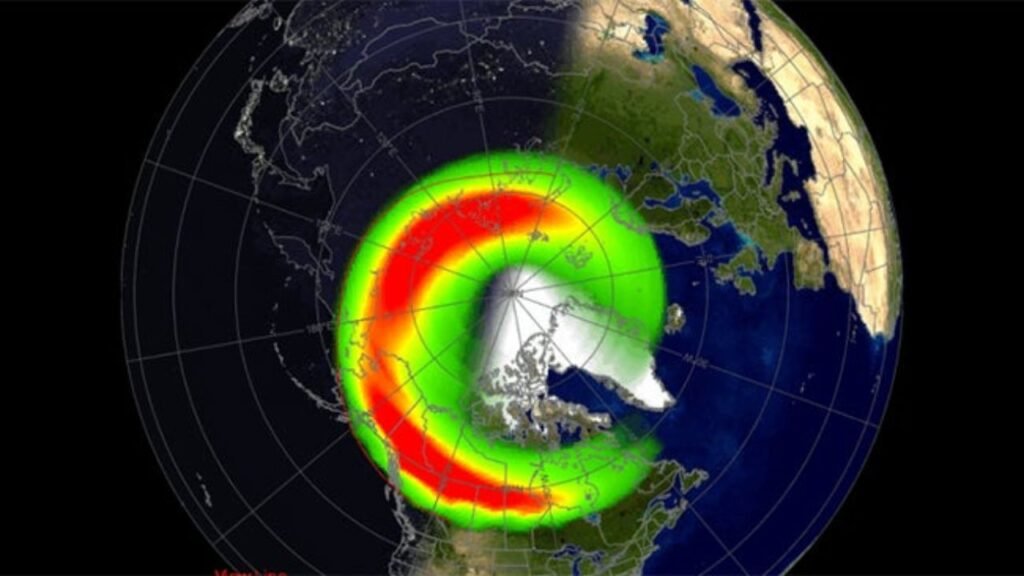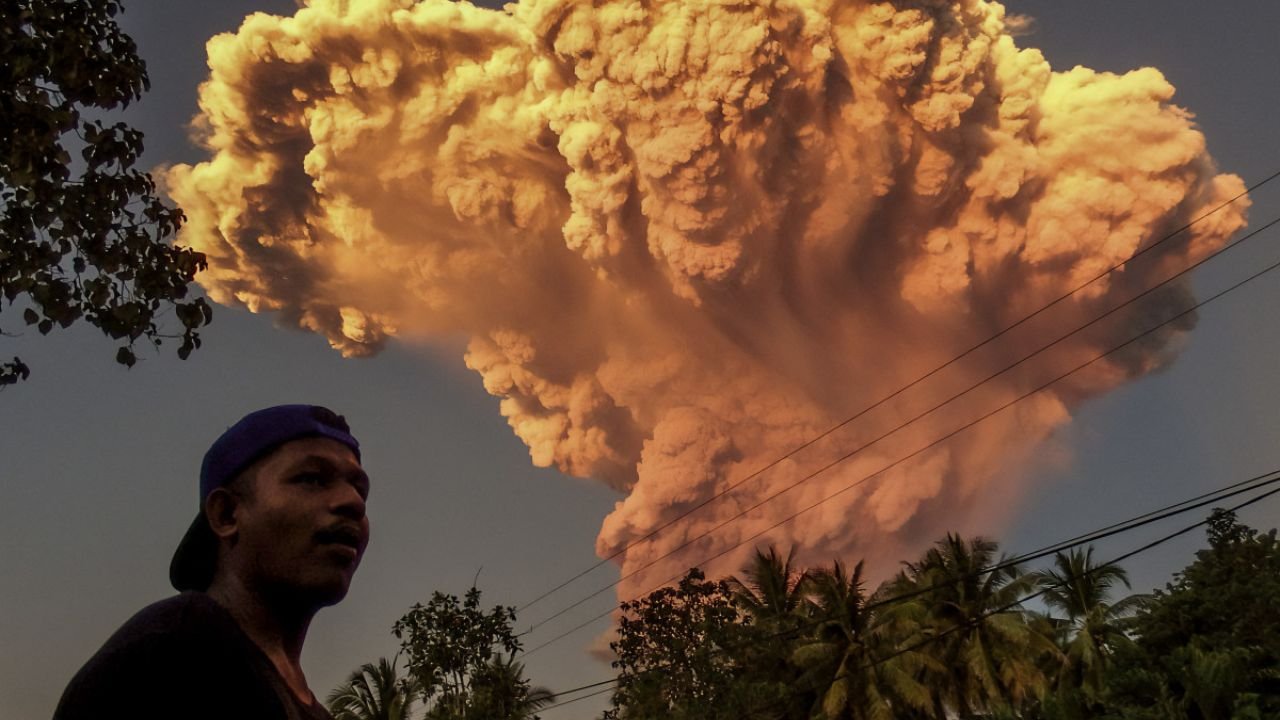The night sky is set to dazzle once again as the Northern Lights, or Aurora Borealis, make a rare appearance across parts of the United States. According to the National Oceanic and Atmospheric Administration (NOAA), a geomagnetic storm is expected to reach a Kp index of 5 tonight, signaling a heightened chance for aurora visibility even in regions farther south than usual .
Understanding the Kp Index and Geomagnetic Storms

The National Oceanic and Atmospheric Administration (NOAA) has predicted that the northern lights will have a Kp index of 5. This index, which ranges from 0 to 9, reflects the strength of the aurora, and a level 5 indicates brighter and more visually appealing displays for viewers in suitable locations.
NOAA is also forecasting minor geomagnetic storms rated at a G1 level on the five-point scale that goes from G0 to G5. A G1 classification suggests there could be slight disturbances to satellite operations and power grids, along with visible auroras in northern regions. However, recent geomagnetic events of a similar intensity have not caused significant infrastructure issues.
According to NOAA’s outlook, the aurora activity is expected to weaken by Monday night. At that point, only around six U.S. states are likely to remain within the aurora’s visible range. Most of Alaska and all of Canada are expected to have high chances of viewing the northern lights.
States with the Best Chances to See the Northern Lights
NOAA’s forecast suggests that tonight, the following 15 U.S. states have the highest likelihood of witnessing the Aurora Borealis:
- Alaska – Particularly the northern regions, including Fairbanks and Barrow, are prime spots.
- Washington – Areas like Seattle and Spokane may have clear skies for viewing.
- Montana – Cities such as Billings and Great Falls could experience aurora displays.
- North Dakota – Fargo and Bismarck are within the aurora’s reach.
- Minnesota – Minneapolis and Duluth might witness the lights.
- Idaho – Boise and Coeur d’Alene are potential viewing locations.
- South Dakota – Sioux Falls and Rapid City could have clear skies.
- Nebraska – Omaha and Lincoln are within the aurora’s path.
- Iowa – Des Moines and Cedar Rapids might catch a glimpse.
- Wisconsin – Madison and Milwaukee are potential spots.
- Michigan – Detroit and the Upper Peninsula could see the lights.
- New York – Albany and Buffalo are within the viewing area.
- New Hampshire – Concord and Manchester might experience aurora displays.
- Vermont – Montpelier and Burlington are potential viewing locations.
- Maine – Augusta and Portland could have clear skies for viewing.
These states fall within NOAA’s “view line,” which marks the southern boundary for aurora visibility. While Alaska has the highest probability, the other states listed have a moderate chance, depending on local weather conditions.
NOAA suggests that the best time to observe the northern lights is between 10 p.m. and 2 a.m. local time. For the clearest view, people should stay away from areas with artificial lighting, head as far north as possible, and find elevated spots with wide-open skies.
The right way to watch Northern Lights
The best way to watch the Northern Lights is to apply the following tips:
- The New Year’s ball drop is best seen between 10 p.m. and 2 a.m., according to local time.
- Pick a place that is located far from the city to avoid extra light shining into the sky.
- Being at a higher spot often helps you see clearer pictures of what is above.
- The sky should be clear check the forecast to know if it will be cloudy.
- It is important to know about the solar wind because it greatly influences the chance to see auroras.
NOAA’s Space Weather Prediction Center gives live updates and predictions for you to use when planning your viewing.
Photographing the Northern Lights

Capturing the Aurora Borealis can be challenging but rewarding. Here are some photography tips:
- Equipment: Use a DSLR or mirrorless camera with manual settings.
- Lens: A wide-angle lens (14mm to 24mm) allows more of the sky to be captured.
- Settings:
- Aperture: Set to the widest possible (f/2.8 or lower).
- ISO: Start at 800 and adjust as needed.
- Shutter Speed: Between 5 to 25 seconds, depending on aurora movement.
- Tripod: Essential to prevent camera shake during long exposures.
- Focus: Manually focus to infinity before it gets dark.
For smartphone users, apps like NightCap (iOS) or Camera FV-5 (Android) can help adjust settings for low-light conditions.
The Science Behind the Lights
The Northern Lights are a result of charged particles from the sun colliding with Earth’s magnetic field. These particles excite gases in the atmosphere, causing them to light up. The colors of the aurora depend on the type of gas and its altitude:
- Green: Oxygen at lower altitudes (up to 150 miles).
- Red: Oxygen at higher altitudes (above 150 miles).
- Blue/Purple: Nitrogen molecules.
During periods of high solar activity, such as the current solar maximum, auroras can be more intense and visible at lower latitudes.
Safety and Environmental Considerations
While chasing the Northern Lights can be exhilarating, it’s essential to prioritize safety:
- Weather Conditions: Be prepared for cold temperatures, especially in northern regions.
- Wildlife: In some areas, be aware of local wildlife and take necessary precautions.
- Leave No Trace: Follow Leave No Trace principles to preserve natural habitats.
Additionally, some regions may have specific guidelines or restrictions to protect the environment and wildlife. Always check local regulations before heading out.
Final Thoughts
Tonight presents a unique opportunity to witness one of nature’s most mesmerizing displays. Whether you’re in Alaska or one of the other 14 states listed, the Aurora Borealis may light up your sky. Remember to dress warmly, find a dark spot with a clear view of the northern horizon, and enjoy the spectacle.
For real-time updates and forecasts, visit NOAA’s Space Weather Prediction Center or follow local meteorological agencies. Happy aurora hunting!






